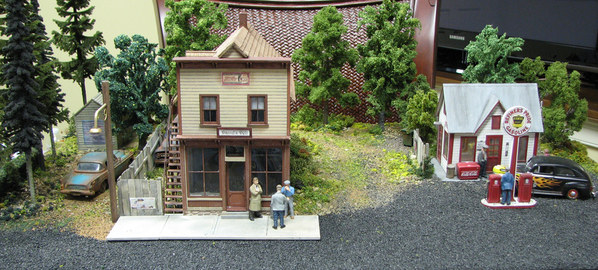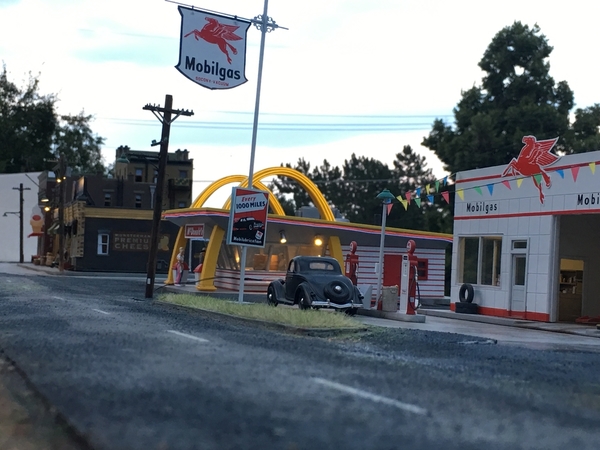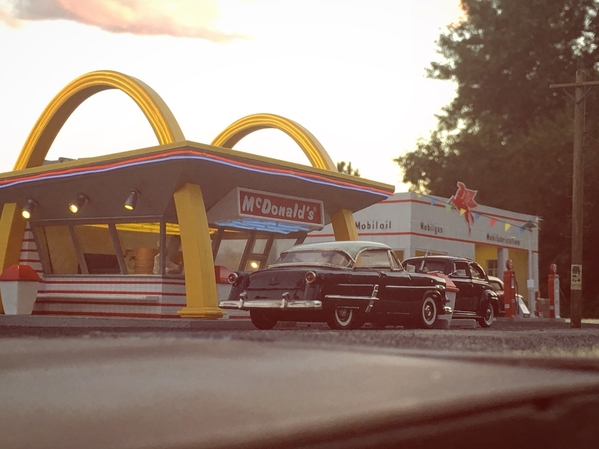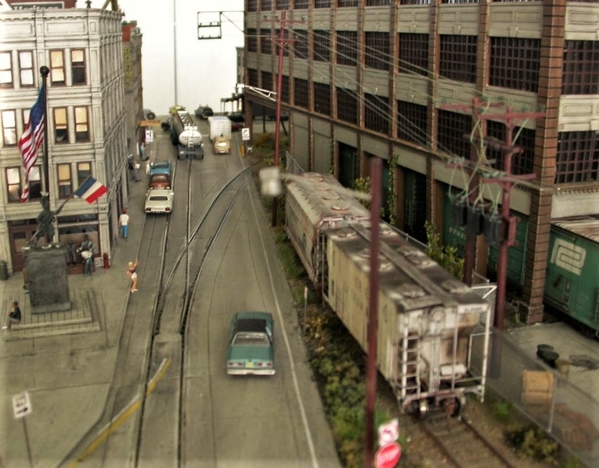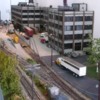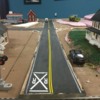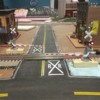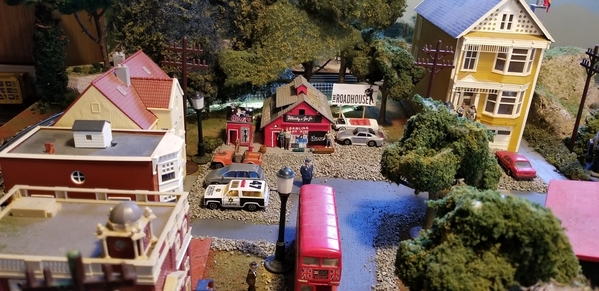That tape looks great. 6" wide with a paper backing would be fantastic for laying it down and cutting it perfectly before adhering it to the surface. How do you hide the seems if you need to make a turn in the road though? Have to somehow blend it in.
The tape does have a paper backing, which, once removed, allows the tape to stay-put pretty firmly (which can be expected since its intended use is for stair treads.) Your instincts about keeping the backing on while you configure and cut exactly what you want where are insightful.
Regarding turns in a roadway, or intersections, for that matter, I use a fine "N" gauge or "HO" gauge dark-gray/black "ballast" type of product I bought from two sources: Scenic Express and Dennis Brennen. I spread it and work it around with a dry paint brush. If you examine the top 2nd and 3rd photos, above, you can see I have not worked the granules thoroughly around yet, though I sometimes leave them that way to suggest a well-worn road.
Here it is further worked-in in that same project...
The scene featuring a trailer park has had the fine granules worked-in more thoroughly... which includes the fact that the "roadway, goes down a slope, from the level of the trailers to where the transients are relaxing.
which includes the fact that the "roadway, goes down a slope, from the level of the trailers to where the transients are relaxing. This close-up shows you one seam obliterated (to the immediate right of the pedestrian) and one seam farther down that slight slope which had been not yet completed in my use of the granules.
This close-up shows you one seam obliterated (to the immediate right of the pedestrian) and one seam farther down that slight slope which had been not yet completed in my use of the granules.
Here is another roadway made of the 3M stairway tape. A seam is still visible in one spot, before the granules and more groundcovers were more thoroughly applied...
This photo shows a project where the working-in of the fine ballast to obliterate seams (and there were several of them) got completed to my satisfaction..
FrankM






